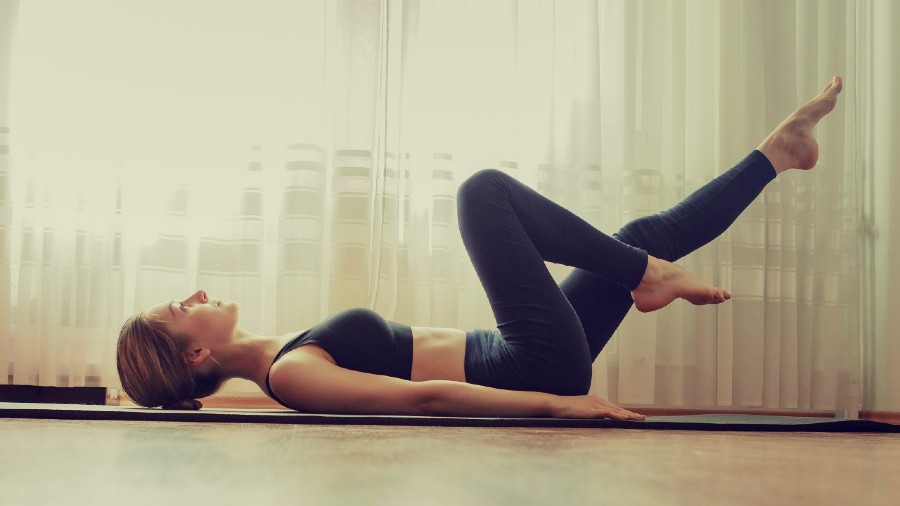Exercise is one of the best things you can do for your mental and physical health. But too often, the only measurement people use to evaluate their progress is their weight, which is not the most accurate metric to assess fitness and can also be emotionally fraught.
For one thing, muscle is denser than fat, so if you’re doing a lot of strength training, the number on the scale could go up as you work out more. Additionally, research suggests that body size does not necessarily correspondto health.
“Fitness is more important than fatness to your cardiovascular and metabolic health, and your overall risk of morbidity and mortality,” said Lee Stoner, an assistant professor of exercise physiology at the University of North Carolina at Chapel Hill in the US.
Fortunately, there are more accurate (and less anxiety-inducing) metrics you can use to assess your health and physical conditioning. Below are several expert-recommended ways to gauge your fitness.
Heart health metrics
From a physiology perspective, fitness could be defined as “how well your heart, lungs, cardiovascular system delivers and uses oxygen,” Stoner said. The easiest way to assess that is with your heart rate. Most smartwatches on the market measure heart rate relatively reliably — though there are some concerns that the products are not as accurate for people with darker skin tones. You can also take your heart rate manually at your wrist or neck by counting the number of beats you detect for 15 seconds and multiplying that by four.
Resting heart rate refers to the number of times your heart beats in a minute while you’re not exerting yourself. The better your cardiovascular fitness, the lower your resting heart rate is likely to be because the heart can pump more blood with every beat. Fewer beats mean the heart is working more efficiently, pushing the same amount of blood through the body with less effort.
A normal resting heart rate for healthy adults is between 60 and 80 beats per minute. Athletes commonly have a lower resting heart rate, sometimes dropping below 60 beats per minute.If your resting heart rate is above 80, regular aerobic exercise could help you lower it over time.
You can also take your heart rate after an exercise session and track how it changes from week to week, particularly if you often perform the same workout, like a regular exercise class or running a set loop around your neighborhood.
“As you get more fit, you’re going to see that the heart rate comes down at the same intensity of exercise,” said Christopher Lundstrom, a lecturer in sport and exercise science at the University of Minnesota, US. “So that heart rate is certainly a good measure and an easy measure that anybody could take.”
Exercise goals
When you start a new training programme, choose a test that reflects your fitness goals. Complete the test during your first workout to establish your baseline ability. Then repeat the test every month to see how much you’ve advanced. As your strength and cardiovascular fitness improve, you should be able to complete more reps or beat your earlier time.
Another way to measure gains in strength is the amount of weight you are able to use for an isolated movement, like a biceps curl. If you are gradually increasing the weight you use — while still performing the movement safely and correctly — you can assume that your muscle is getting stronger.
For endurance, Amber Harris, a certified running and strength coach from Kansas City, Kansas, US, has her clients focus on speed and distance. She usually starts beginners with interval training, in which they run for one minute and then walk for two. To track endurance at this stage, she measures how far her clients can get in their one-minute intervals, or challenges them to lengthen their intervals, running for two, three or four minutes before slowing down to walk.
Speed and distance are just as important for more experienced runners. As you progress in your training, Harris said, see how fast you can run a mile, or whether you can increase your mileage from one week to the next.
“These are all ways that you can judge if you’re improving without having to worry about, ‘Is my waist shrinking? Are my clothes shrinking?’” Harris said. “Because in the grand scheme of things, that’s just not important to me.”
Activities of daily living
When it comes to exercising for your health and lifestyle, the most important metrics might be the ones that you track outside of the gym, such as being able to carry your growing toddler or walking up three flights of stairs without getting even slightly winded.
Jamie Carbaugh, a certified personal trainer and groupfitness instructor who often works with older adults, defines fitness with the answer to this question: “Are you able to effectively perform the functions that you want to be able to perform in your daily life?”
Justice Williams, the director and head coach of Fitness4AllBodies, said that one of his clients knew she had made progress because, on an airplane, she was able to lift her suitcase into the overhead compartment without any assistance.
“She was so excited that after she got off the plane and went to her hotel, she called me,” he said. “There’s independence, you know what I’m saying? ‘I was able to do this by myself without asking for assistance, and that felt good to me’.”
New York Times News Service










